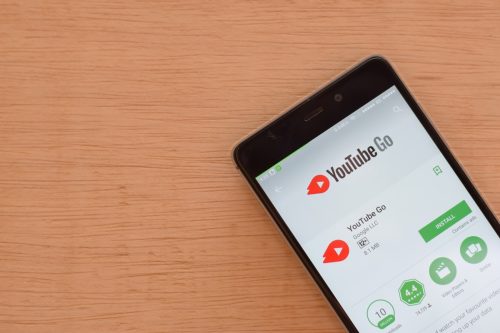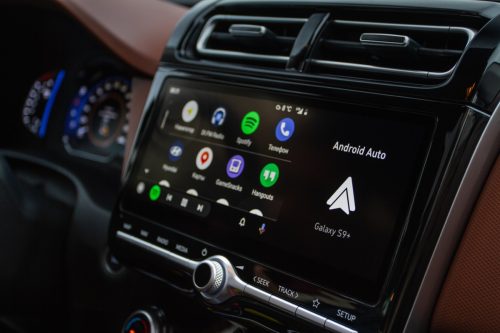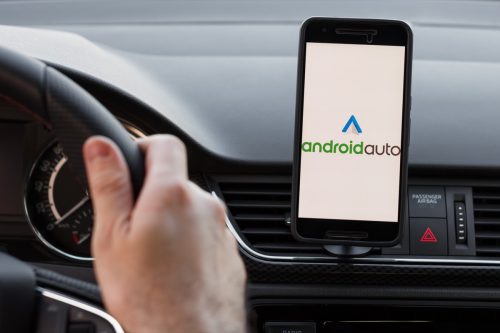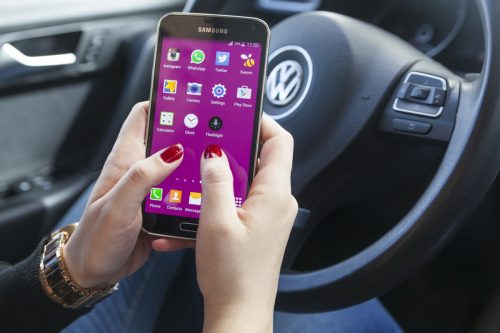If You Have an Android, You’re Now Barred From Doing This on Your Phone

One of the great things about technology is that it’s constantly evolving: Newer, faster phones are introduced, and different apps are launched to help make life easier to navigate. But with these benefits also come drawbacks, as sometimes tech features we’ve come to know and love are phased out. Android users may be disappointed to learn that one phone feature has been shut down, effective immediately. Read on to find out what you can’t do on your Android anymore, and what you may have to use instead.
READ THIS NEXT: If You Have an Android, You’ll Be Barred From Doing This, Starting in August.
A few Android abilities have been on the chopping block in 2022.

So far this year, Android users have faced different updates and changes thanks to Google, which owns and operates the operating system (OS) for these devices. The tech giant nixed the YouTube Go app from the Google Play store, with plans to begin shutting it down fully in August. And bookworms were dismayed back in April when it was announced that they could no longer purchase digital books in the Barnes & Noble NOOK Android app. Doubling down on this, Google also eliminated the ability to purchase audiobook titles from Amazon’s Audible for Google Play Android app with a credit or debit card.
And while not being able to stream videos or buy new ebooks can be frustrating, Google has now decided to do away with one of Android’s more useful and convenient capabilities.
If you rely on one Android feature while driving, prepare for a change.

With Android Auto, you can access all of your phone’s abilities while staying safe on the road. When you plug your smartphone into a designated port in your car, the system populates your Android apps on the screen in the central console. This allows you to play music, get driving directions, or have a phone call, using voice commands and staying hands-free. Unfortunately, this feature is limited to cars equipped with Android Auto, meaning your vehicle probably doesn’t have this feature if it was made before 2015—when the system was introduced.
Previously, Android users without a newer, compatible car could access this nifty feature directly on their smartphones—but this option is no more. Now, you’re only able to use Android Auto when it’s connected to a car, 9to5Google reported, meaning those with older vehicles are out of luck.
RELATED: For more up-to-date information, sign up for our daily newsletter.
Users were warned that accessibility would be limited.

According to 9to5Google, this shift has been a long time coming. Google originally announced plans to remove Android Auto from phones in 2019, introducing the temporary Android Auto for Phone Screens. And earlier this month, users started seeing a message that read “Android Auto for phone screens will stop working soon” when opening the app, the outlet reported.
Android Auto for Phone Screens has not been available on anything higher than the Android 12 OS, but if you had an earlier version, you were still able to use it. This week, however, users received a new message in the app, which informed them that “Android Auto is now only available for car screens.”
Google wants you to use a different app.

While Android users might feel cheated out of their ability to access Android Auto directly on their phones, Google actually has a reason behind this decision.
The tech giant is pushing for a shift to Google Assistant Driving Mode, a new user interface (UI) that was announced back in 2019 and rolled out in 2021, 9to5Google reported. And while it doesn’t replace Android Auto for cars, those without compatible vehicles can run Google Assistant Driving Mode on their smartphone itself.
But 9to5Google compared the two UIs, finding that the new UI has some drawbacks. For starters, a voice command to the easiest way to initially launch Driving Mode, before adding a shortcut to your home screen. Comparably, Android Auto for Phone Screens was simply downloaded from the Google Play Store and opened from your home screen. Google Assistant Driving Mode also doesn’t work in landscape (when you turn your phone horizontal), displays limited media options, and is only available in certain countries—unlike its predecessor.
READ THIS NEXT: Google Just Issued Another Urgent Warning to All Android Users.